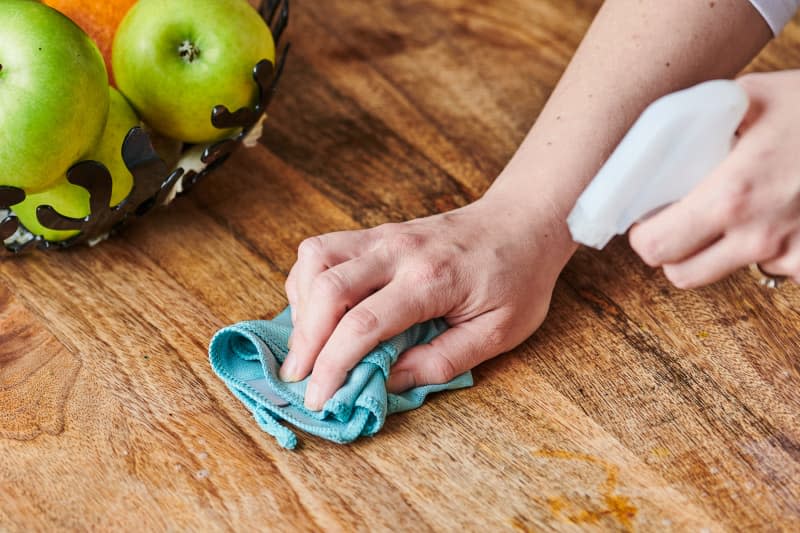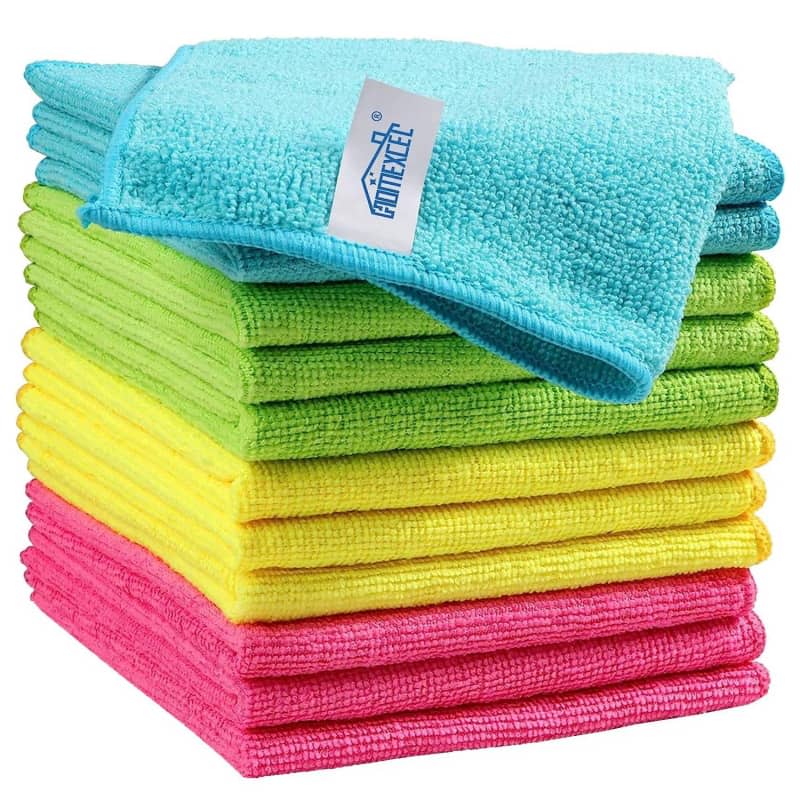3 Ways You’re Using Your Microfiber Cloth All Wrong

It’s fair to say that any cleaning is better than no cleaning at all. But if you’re using a microfiber cloth to dust and wipe down surfaces in your home, you might need to tweak your approach for optimal results.
We spoke with a cleaning professional to learn about some common errors made with microfiber cloths and, more importantly, how to correct them.
What Is a Microfiber Cloth?
As its name suggests, microfiber cloth is made from very small polyester fibers — less than one denier, a measure of fineness, to be exact, according to Microfiber Wholesale. In simpler terms, a single microfiber is 1/100 the diameter of a strand of human hair and 1/20 of a strand of silk. There are about 200,000 of these minuscule fibers in just one square inch of microfiber cloth, and they all go to work cleaning surfaces.
The split microfibers make it easy for the cloth to reach into crevices to pull out dust, dirt, and microbes that would normally be overlooked by other cleaning supplies, like cotton rags or paper towels. They cut down on waste because you can use them over and over again, plus they are soft and supple enough to use on delicate surfaces without scratches. However, the real “magic” part of microfiber is that the cloth has a positive charge which attracts dust, dirt, grease, and grime (all of which have negative charges).
Stop Doing These 3 Things with a Microfiber Cloth
Despite its magical cleaning powers, a microfiber cloth works much better when you avoid these three mistakes, according to Logan Taylor, owner of The Dazzle Company, a Seattle-based home cleaning service.
Cleaning with the wrong side of the cloth. There’s a right side and a wrong side of some microfiber cloths. “Most microfiber cloths are the same on each side, but if you have a dual-sided cloth, then use the ribbed side for scrubbing and the fluffy side for dusting,” says Taylor.
Using it dry instead of damp (or vice versa). Use a dry microfiber cloth to make quick work of regular dusting duties throughout your home, says Taylor. But use a wrung-out wet cloth to clean spots that have more grime, like floors, baseboards, doors, doorframes, and windowsills.
Using it on the wrong surfaces. Microfiber cloths are not built for scrubbing, says Taylor, so don’t use them on sinks, tubs, or dirty countertops. “For those jobs, move to a more abrasive tool like a sponge or a tile brush; you’ll save yourself a lot of time and energy,” he says.
A microfiber cloth is indeed soft enough to wipe delicate objects like a camera lens, but only if you’ve got a fresh one on hand; otherwise, Taylor says you’ll risk scratching the surface with any debris stuck to the cloth from a previous cleaning session.
How to Wash Your Microfiber Cloth So It Lasts
One of the best parts of using a microfiber cloth to clean is that you don’t have to dispose of it. That cloth might be looking worse for wear after cleaning your house, but you can launder it so it’s as good as new for next time. Here are some tips on how to clean your microfiber cloths.
Wash in cold or warm water with other microfiber cloths. “Don’t use more laundry soap than the directions say to use and definitely don’t use fabric softener or bleach,” says Taylor.
Let them air dry. If you’re in a rush, Taylor says it’s fine to dry them on low heat. Again, drying them with other microfiber cloths is best, but make sure you don’t use them with dryer sheets — otherwise, the fibers will get coated and lose their charge.
Are those microfiber cloths super dirty after cleaning? No judgment here, and no problem: Taylor recommends presoaking them for an hour in a gallon of cold water mixed with a cup of white vinegar, and they’ll be good to go for next time.


